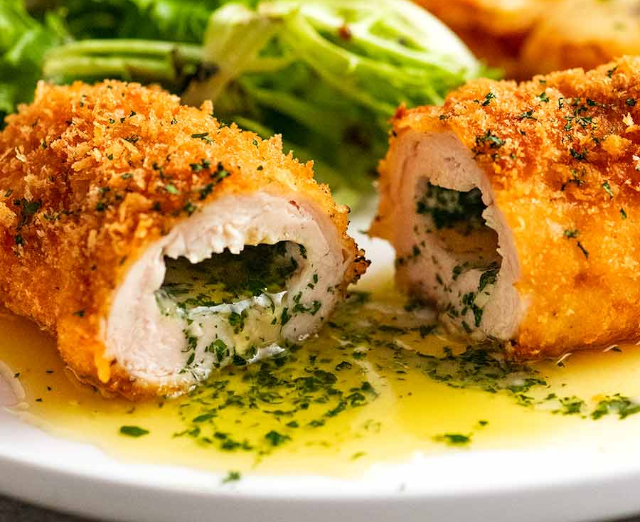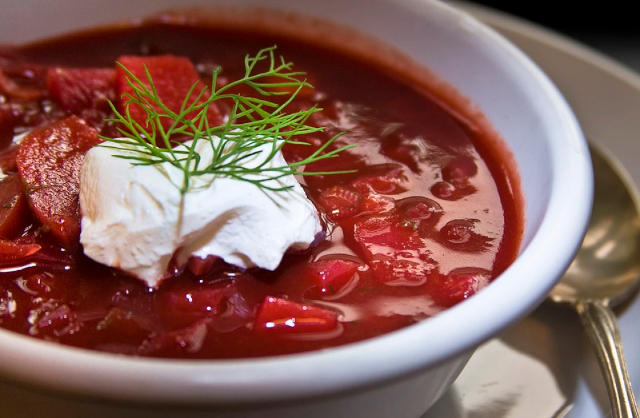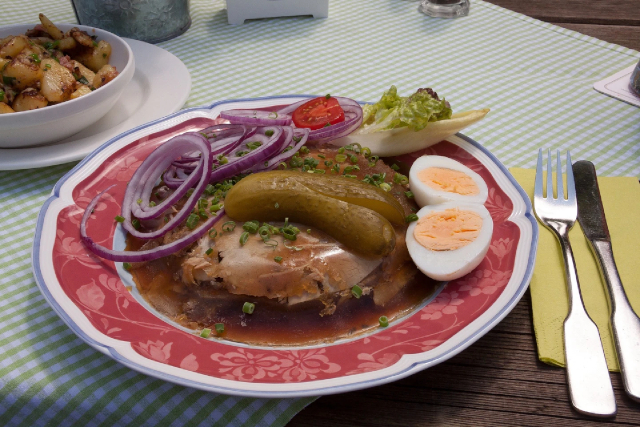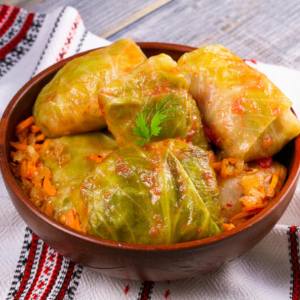Ukraine has been the scene of ongoing unrest between Ukraine nationalists and Russia sympathizers for the past several years. But that hasn’t stopped its proud people from honouring their ancient culture. And the way they do that is through food and celebration!
 Chicken Kiev: The most iconic of Ukranian mains, and the best known around the world…
Chicken Kiev: The most iconic of Ukranian mains, and the best known around the world…
In the Soviet era, Ukraine was touted as ‘Russia’s Breadbasket’. Its rich soil and convivial climate lend themselves to the growing of a wide variety of foods in abundance. But when the Berlin Wall fell, Ukraine asserted its independence again. According to Wikipedia:
“Ukraine is a developing country ranking 74th in the Human Development Index. It is the poorest country in Europe alongside Moldova, suffering from a very high poverty rate as well as severe corruption. However, because of its extensive fertile farmlands, Ukraine is one of the largest grain exporters in the world. It also maintains the third-largest military in Europe after Russia and France. Ukraine is a unitary republic under a semi-presidential system with separate powers: legislative, executive, and judicial branches.” The country is a member of the United Nations, and the Council of Europe, and has been lobbying for membership in the European Comunity.
Probably as a reaction to the impending inclusion of Ukraine in the EC, the Russian Federation invaded and occupied a significant portion of eastern Ukraine including the historic and strategic Crimean peninsula in February, 2014. The region, Russia claimed, was primarily inhabited by culturally-Russian people and, therefore should be part of Russia. A large number of those former east Ukrainians applauded the move. But the majority in the country feared their gigantic neighbour would keep advancing and take over their entire country. That hasn’t happened. But if it ever did, Ukrainians should take heart in the knowledge that so many of their brothers and sisters have emigrated to North America and other places, that their colourful culture will survive, no matter what.
If you’ve ever been a guest at a Ukrainian wedding, you’ll know what I meant when I said they love their celebrations – and the core of their celebrations is food!
Today, we’ll survey a selection of Ukrainian main dishes and specialties you’re likely to encounter if you visit the country or are lucky enough to be invited to one of their special occasions…
On our menu today
As usual, we’ll start with some dishes you’ve probably heard of, if not tried…
Borscht: This beet soup is a staple in Russia and is also popular across Ukraine. Borscht is traditionally made from a long list of ingredients – as many as 30 – but most Ukrainian cooks now use a more streamlined recipe.

But the technique remains the same: Beef bones are simmered for at least 4 hours to make a rich broth. The bones are then removed and the meat is separated from them for use later. Beets and fermented beet juice are traditionally added to the broth along with white cabbage, carrots, parsley root, potatoes, onions and tomatoes. The meat is added back to the soup 15 minutes or so before serving. Poultry, fish and even mushroom broth variations are not unknown.
Chicken Kiev: I think it’s safe to say that most folks have heard of Chicken Kiev, named after Ukraine’s capital. According to Wikipedia, Chicken Kiev, “is a dish made of chicken fillet pounded and rolled around cold butter, then coated with eggs and bread crumbs, and either fried or baked. Stuffed chicken breast is generally known in Russian and Ukrainian cuisines as côtelette de volaille. Since fillets are often referred to as suprêmes in professional cookery, the dish is also called suprême de volaille à la Kiev.” The butter is usually chef butter, blended with fresh herbs. Allegedly created by Russian chefs in the 18th century, Chicken Kiev is a good example of the many recipes and techniques Russia appropriated from French cuisine during that era.
Deruny: These are the traditional Potato Pancakes of Ukraine, a fixture at breakfast and supper there. Your basic Deruny are simply made of finely grated potatoes and salt. But variations may include meat, chopped onions, mushrooms, fresh herbs or a variety of spices. They can be pan-fried or baked.
Vareniki: Ukraine also boasts its own version of the Polish specialty, Pierogi. In Ukraine, they cal them Vareniki, but they’re still classic dumplings filled with cheese or potatoes.

However, they can be filled with all kinds of things including: cabbage, meat, mushrooms, cottage cheese, cherries or currants. They’re typically served as starters at big meals, with sour cream for dipping or dousing.
Golubtsi: Like Vareniki, Golubtsi are a suppertime favourite shared with Poland – and most other Eastern European countries (see photo, top of page). They’re classic Cabbage Rolls, stuffed with minced meat, rice and a variety of herbs and spices. And, again, these little golden gems are usually topped with sour cream!
Banush: Here’s a dish that will remind you more of Grits than any European concoction. It’s another staple, found in most restaurants and on most family tables in Western Ukraine. Corn grits are cooked up really thick, and garnished with fried pork fat (Cracklings) and cheese. You’ll occasionally find mushrooms in the mix, too.
Hodolets: Not a dish for aspic haters. It’s jellied meat broth filled with meat from pork hocks. Though it may be unsettling to some visitors, Ukranians love to feature it at celebrations.

It’s traditionally served with other Ukrainian delicacies including slivered red onions and hard boiled eggs, and salad veggies such as lettuce and tomatoes.
Sausages: As in other Eastern European countries, sausages – often homemade – are a staple. Most Ukrainian cooks swear by their own family-recipe blend of meats, herbs and spices, almost always including garlic. Sausages may be served as accompaniments to other specialties such as Vareniki, but are often eaten by themselves with a side of fresh, buttered bread. Ukrainian sausages are always baked, after which they can be frozen, and later fried baked again or grilled.
These are just a few of the dishes Ukrainians enjoy every day. Don’t be afraid Google more! I can recommend theculturetrip.com, and ukrainian-recipes.com as starting points for your culinary side trip!
~ Maggie J.

